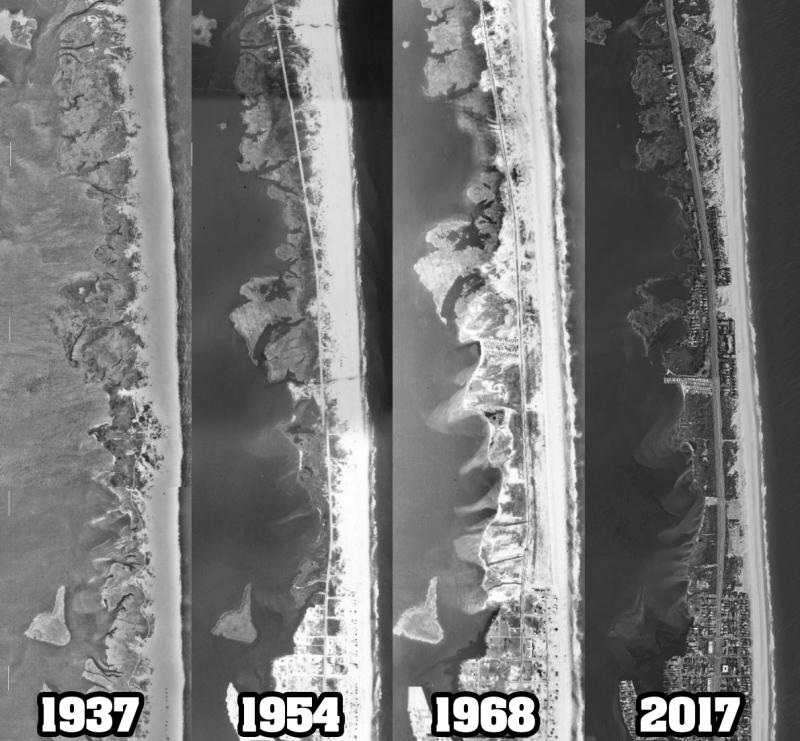THE ROAD TO FENWICK ISLAND 1915
HISTORY OF CAPE HENLOPEN AND BEYOND
ON THE ROAD TO FENWICK ISLAND FROM REHOBOTH
February 9, 1915: Wilmington Evening Journal :
A hundred year ago is was difficult to travel between these two beach towns, a sandy
road of wild sand dunes from Dewey Beach southward to Fenwick Island, an inlet at
Indian River Inlet with no bridge, and a new town under construction , Bethany Beach.
By horse or foot it was difficult to traverse the round about way and autos needed to use
the highways on the western side of the inland bays, through Millsboro.
In 1915, The Delaware Public Lands Commission, issued a report to urge the building of a
coastal road between Rehoboth and Fenwick, across the wicked dunes that “will return a
thousand fold to the state for every dollar spent”. Yes, they knew of the many obstacles
that lay in the way for an early 20th century road, sandy, unpaved, rutted and impassable
in wet weather. Plus, until 1911 there were no roads to feed western or northern traffic to
the coastal highways. That came about when T. Coleman du Pont built his own hard surface
road north to south in mid state. Still this event did not directly benefit at coastal road
from Rehoboth to Fenwick. Farm produce, at that time '”marsh hay grass' was the only
money maker with a small bit of cattle grazing.
Oceanside vacation homes did catch a few eyes of the more wealthy property owners and
the Indian River Inlet needed to be covered. The commission knew they were late with these
decisions but WW I delays, squabbling politics and economic difficulties stood in the path.
It was 1939 before a hard surface road appeared with a bridge over the inlet, but, it did,
“return a thousand fold of every dollar spent”.
Abstract: 9 February, 1915, Wilmington Evening News, and Michael Morgan's Delaware
Diary, Delaware Coast Press, 2019.





















































